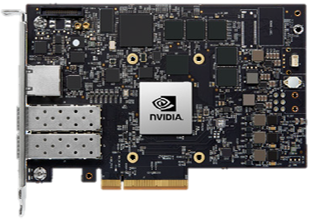The journey of IT transformation for many organizations is a steady stream of new ideas and innovative technologies. The continued push to use more information of all types in larger and larger quantities with near real-time access to this information is pushing modern IT data centers and associated infrastructure services to their limits. In addition, the shift toward software-defined data centers across server, storage and network environments as well as multicloud implementations is changing the way data flows through composable pools of disaggregated resources across data center, edge and cloud locations.
In 2014, Dell Technologies launched a new concept for networking technology solutions based on an open networking architecture. By integrating the Open Networking Install Environment (ONIE) into the PowerSwitch platforms, customers had the choice of matching a specific model of switch hardware with several operating system choices based on their specific needs and requirements. Dell continued this open networking concept with their virtual edge platforms again giving customers a choice of hardware and software for SD-WAN solutions that best met their remote site needs.
In 2020, Dell took the open networking concept to the network operating system itself by introducing Enterprise SONiC Distribution by Dell Technologies based on open-source SONiC, which is composed of independent containers. With this innovation, customers could now pick and choose which NOS components they required to run on Dell switching platforms.
Also in 2020, Dell Technologies started working closely with VMware on their Project Monterey (now vSphere Distributed Services Engine) effort, which involved the integration of data processing units (DPUs) into server platforms with industry-leading DPU vendors like NVIDIA, AMD Pensando and Intel. The benefits of implementing DPUs include offloading infrastructure services like networking from the CPU to the DPU to free up CPU cycles and acceleration of these services via the built-in hardware accelerators on the DPU.
This activity led to the next stage of evolution for our open networking vision, where customers could choose from various DPU hardware and operating system software options, again based on their unique application and infrastructure needs. We feel this will prove to be an inflection point enabling the first step in the evolution of IT infrastructure disaggregation.
Integration of the NVIDIA BlueField-2 DPU, with its multi-functional capabilities, was an easy choice when looking at DPU vendors for Dell. NVIDIA has been a pioneer of accelerated computing from chips and systems to the algorithms and applications they run.
BlueField-2 delivers a broad set of accelerated software-defined networking, storage, security and management services with the ability to offload, accelerate and isolate data center infrastructure. This DPU comes in both a 25GbE and 100GbE offering. It also features the NVIDIA DOCA software framework, which enables developers to rapidly create applications and services for BlueField-2.
 |
| NVIDIA BlueField-2 DPU – 2x25GbE HHHL Form Factor. |
The Dell SmartDPU Software Solutions is a portfolio of DPU solutions for customers that are running a virtualized data center based on VMware virtualization. The solutions are fully integrated, turnkey offerings that are fully tested and validated by Dell Technologies and backed by Dell’s global support and services organization. There are three specific offerings:
◉ NVIDIA BlueField-2 running vSphere Distributed Services Engine (formerly called Project Monterey) on Dell VxRail platforms: This offering incorporates a BlueField-2 into select Dell VxRail platforms with the DPU again running vSphere Distributed Services Engine. In addition to the consolidated management under vCenter, this solution takes advantage of unique VxRail integrations that have been jointly engineered with VMware for automated lifecycle management.
◉ NVIDIA BlueField-2 25GbE running vSphere Distributed Services Engine on Dell PowerEdge Servers: This solution incorporates a BlueField-2 into select Dell PowerEdge platforms with the DPU running VMware vSphere Distributed Services Engine available with vSphere 8.0. This configuration takes advantage of consolidated management under vCenter to help reduce operational costs and simplify lifecycle management.
◉ NVIDIA BlueField-2 25GbE running Ubuntu OS on Dell PowerEdge: This OEM arrangement allows customers to purchase BlueField-2 cards and install them on select Dell PowerEdge servers running NVIDIA firmware and Ubuntu software along with the NVIDIA DOCA software framework. This offering will give application developers a chance to learn more about DPUs and how they can be integrated into their environments.
Today’s modern workloads and applications are placing unique demands on server CPUs and IT infrastructures. Innovative IT infrastructure solutions will play a major role in supporting these new applications by integrating DPUs as key components of IT infrastructures. Together Dell and NVIDIA have engineered a complete and integrated solution to help enterprise organizations transition to a modern and automated DPU ecosystem.
Source: dell.com





0 comments:
Post a Comment